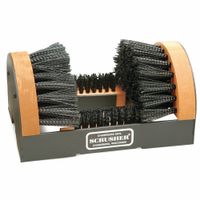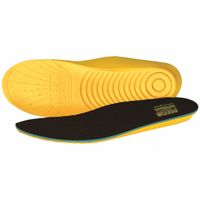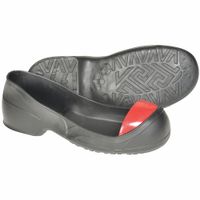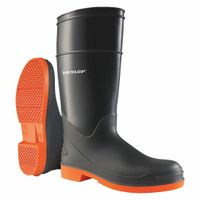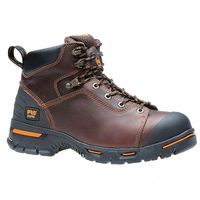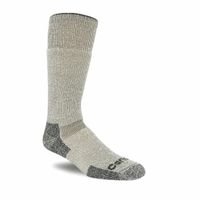Call +(254) 703 030 000 / 751 483 999 / 721 704 777
.....Read More
Frequently Asked Questions
What are the best work boots for construction workers?
The best work boots for construction workers should offer a combination of safety, comfort, durability, and support. Here are some top options:
1. **Timberland PRO 6" Pit Boss Steel Toe**: Known for its durability and comfort, this boot features a steel toe for protection, slip-resistant soles, and a padded top collar for comfort. The PRO 24/7 Comfort Suspension technology helps reduce foot fatigue.
2. **Caterpillar Second Shift Steel Toe**: This boot offers a classic design with a steel toe and slip-resistant outsole. It provides good ankle support and is made from durable leather, making it suitable for tough environments.
3. **KEEN Utility Pittsburgh Steel Toe**: With a focus on comfort, this boot includes a metatomical footbed design and a waterproof membrane. The steel toe and slip-resistant outsole ensure safety, while the breathable lining keeps feet dry.
4. **Red Wing Heritage Iron Ranger**: Although pricier, these boots are renowned for their craftsmanship and durability. Made from premium leather, they offer a non-steel toe option with a Vibram outsole for excellent traction.
5. **Thorogood American Heritage Moc Toe**: Made in the USA, these boots feature a non-steel toe with a slip-resistant wedge sole. The Goodyear welt construction ensures longevity, and the cushioned insole provides comfort.
6. **Wolverine Raider 6" Work Boot**: Known for its comfort, this boot features a MultiShox insole and a Contour Welt construction for flexibility. It offers a non-steel toe option with a slip-resistant rubber outsole.
7. **Danner Bull Run Moc Toe**: This boot is crafted from full-grain leather and features a non-steel toe with a slip-resistant outsole. The unlined leather upper provides a comfortable fit, and the stitch-down construction offers stability.
When choosing work boots, consider factors like the specific safety requirements of your job, the climate, and personal comfort preferences.
How do I choose the right size for safety-toe shoes?
To choose the right size for safety-toe shoes, start by measuring your feet at the end of the day when they are most swollen. Use a Brannock device or a ruler to measure both the length and width of your feet, as sizes can vary between brands. Ensure you measure both feet, as one may be slightly larger, and use the larger measurement for sizing.
Consider the type of socks you will wear with the shoes, as thicker socks may require a slightly larger size. When trying on safety-toe shoes, wear the same type of socks you plan to use regularly.
Ensure there is enough room in the toe box. You should have about a half-inch of space between your longest toe and the front of the shoe to prevent discomfort and allow for natural foot movement. The safety toe cap should not press against your toes.
Walk around in the shoes to assess comfort and fit. The heel should fit snugly without slipping, and the shoe should not pinch or rub anywhere. Pay attention to the width as well; a shoe that is too narrow can cause blisters and discomfort.
Consider the shoe's arch support and cushioning, as these contribute to overall comfort, especially if you stand or walk for long periods. If you have specific foot issues, such as flat feet or high arches, look for shoes that accommodate these needs.
Finally, consult the brand's sizing chart, as sizes can vary. If purchasing online, check the return policy in case the fit is not right. Prioritize comfort and protection over style to ensure the shoes meet safety standards and provide adequate support.
What materials are best for waterproof footwear?
The best materials for waterproof footwear include:
1. **Gore-Tex**: A highly popular waterproof and breathable membrane, Gore-Tex is used in many high-performance outdoor shoes and boots. It effectively keeps water out while allowing moisture from sweat to escape, ensuring comfort during prolonged wear.
2. **Rubber**: Known for its impermeability, rubber is commonly used in rain boots and galoshes. It provides excellent waterproofing and is durable, making it ideal for wet and muddy conditions.
3. **Neoprene**: Often used in wetsuits, neoprene is a synthetic rubber that offers good insulation and waterproofing. It is flexible and comfortable, making it suitable for water sports footwear and fishing boots.
4. **PVC (Polyvinyl Chloride)**: This plastic polymer is used in the production of waterproof boots and shoes. It is lightweight, durable, and provides excellent waterproofing, though it may not be as breathable as other materials.
5. **Leather with Waterproof Treatment**: Full-grain leather treated with waterproofing agents can offer good water resistance while maintaining breathability. It is often used in hiking boots and casual waterproof shoes.
6. **EVA (Ethylene Vinyl Acetate)**: Used in the soles of many waterproof shoes, EVA is lightweight and provides cushioning. While not inherently waterproof, it is often combined with other materials to enhance water resistance.
7. **Silicone and Wax Coatings**: These are applied to fabrics and leathers to enhance their water-repelling properties. They are often used in conjunction with other materials to improve waterproofing.
8. **Nylon and Polyester with Waterproof Membranes**: These synthetic fabrics are often used in combination with waterproof membranes to create lightweight, breathable, and waterproof footwear.
Each material has its own advantages and is chosen based on the specific requirements of the footwear, such as the level of waterproofing needed, breathability, durability, and comfort.
How can I clean and maintain my work boots?
To clean and maintain your work boots, follow these steps:
1. **Remove Laces and Insoles**: Take out the laces and insoles to clean them separately. Wash laces in soapy water and let insoles air out.
2. **Brush Off Dirt**: Use a soft-bristled brush to remove loose dirt and debris from the boots. For stubborn dirt, use a damp cloth.
3. **Clean the Surface**: For leather boots, use a leather cleaner or a mixture of water and mild soap. Apply with a soft cloth, then wipe with a damp cloth to remove soap residue. For suede or nubuck, use a suede brush or eraser to clean.
4. **Dry Properly**: Let the boots air dry at room temperature. Avoid direct heat sources like radiators or sunlight, which can damage the material.
5. **Condition Leather**: Once dry, apply a leather conditioner to keep the material supple and prevent cracking. Use a small amount and rub it in with a clean cloth.
6. **Waterproofing**: Apply a waterproofing spray or wax suitable for your boot material to protect against moisture. Follow the product instructions for best results.
7. **Polish (if applicable)**: For leather boots, apply a matching polish to restore color and shine. Buff with a soft cloth.
8. **Reinsert Laces and Insoles**: Once everything is dry and clean, put the laces and insoles back in.
9. **Regular Maintenance**: Clean your boots regularly to prevent buildup of dirt and grime. Condition and waterproof them periodically, especially if exposed to harsh conditions.
10. **Storage**: Store boots in a cool, dry place. Use boot trees to maintain shape if necessary.
By following these steps, you can extend the life of your work boots and keep them looking and performing their best.
What are the benefits of using insoles in work shoes?
Insoles in work shoes offer numerous benefits that enhance comfort, support, and overall foot health. Firstly, they provide additional cushioning, which helps absorb shock and reduce the impact on feet during prolonged standing or walking. This is particularly beneficial in work environments where employees are on their feet for extended periods.
Secondly, insoles offer arch support, which is crucial for maintaining proper foot alignment and preventing conditions such as plantar fasciitis. By supporting the natural arch of the foot, insoles help distribute weight evenly, reducing strain on the feet, ankles, and lower back.
Moreover, insoles can improve the fit of work shoes. They fill any extra space within the shoe, preventing the foot from sliding and reducing the risk of blisters and calluses. This snug fit also enhances stability and balance, which is essential in preventing workplace accidents.
Insoles can also address specific foot issues. For individuals with flat feet or high arches, custom or specialized insoles can provide the necessary support and correction, alleviating pain and discomfort. Additionally, insoles with moisture-wicking properties help keep feet dry, reducing the risk of fungal infections and odor.
Furthermore, insoles can extend the life of work shoes by reducing wear and tear on the shoe's interior. By absorbing sweat and pressure, they protect the shoe's original insole and lining, maintaining the shoe's structure and comfort over time.
In summary, insoles in work shoes enhance comfort, provide essential support, improve fit, address specific foot conditions, and contribute to overall foot health, making them a valuable addition to any work footwear.
How do overboots protect against chemical hazards?
Overboots protect against chemical hazards by providing an additional layer of defense over regular footwear, specifically designed to resist permeation, degradation, and penetration by hazardous chemicals. They are typically made from materials like rubber, PVC, or specialized polymers that are resistant to a wide range of chemicals, including acids, bases, solvents, and oils.
The design of overboots ensures that they cover the entire shoe and often extend up the leg, providing comprehensive protection against splashes, spills, and direct contact with harmful substances. The seamless construction and reinforced seams prevent chemicals from seeping through, while features like snug-fitting closures or elastic tops help maintain a secure barrier against contaminants.
Overboots are also designed to be slip-resistant, which is crucial in environments where chemical spills can create slippery surfaces, thereby reducing the risk of falls and further exposure to hazardous materials. Additionally, they are often easy to clean and decontaminate, ensuring that any chemical residues can be effectively removed after exposure, thus preventing cross-contamination.
In environments where chemical exposure is a risk, overboots are an essential component of personal protective equipment (PPE), complementing other protective gear such as gloves, suits, and masks. They are particularly important in industries like chemical manufacturing, pharmaceuticals, and laboratories, where workers are frequently exposed to potentially dangerous substances. By providing a reliable barrier against chemical hazards, overboots help ensure the safety and health of workers, minimizing the risk of chemical burns, skin irritation, and other health issues associated with chemical exposure.
What is the difference between steel-toe and composite-toe boots?
Steel-toe boots and composite-toe boots are both designed to provide protection for the feet, but they differ in materials, weight, comfort, and suitability for various environments.
Steel-toe boots have a toe cap made of steel, offering robust protection against heavy falling objects and compression. They are highly durable and provide excellent puncture resistance. However, steel-toe boots are heavier, which can lead to fatigue over long periods of wear. They also conduct temperature, making them less suitable for extreme hot or cold environments, as they can become uncomfortable.
Composite-toe boots, on the other hand, use non-metal materials such as Kevlar, carbon fiber, or plastic for the toe cap. They are lighter than steel-toe boots, enhancing comfort and reducing fatigue. Composite materials do not conduct electricity or temperature, making these boots ideal for environments where electrical hazards are present or where temperature extremes are a concern. However, while they meet safety standards, composite-toe boots may not offer the same level of puncture resistance as steel-toe boots.
In summary, the choice between steel-toe and composite-toe boots depends on the specific needs of the wearer. Steel-toe boots are preferred for maximum protection in environments with heavy machinery or potential for severe impact. Composite-toe boots are favored for their lighter weight and suitability in environments with electrical hazards or temperature extremes.
How do I care for rubber boots to extend their lifespan?
To extend the lifespan of rubber boots, follow these care tips:
1. **Cleaning**: After each use, rinse off mud and debris with water. Use a soft brush or cloth for stubborn dirt. Avoid harsh chemicals; mild soap is sufficient.
2. **Drying**: Air-dry boots naturally, away from direct sunlight or heat sources like radiators, which can cause cracking. Stuff boots with newspaper to absorb moisture and maintain shape.
3. **Storage**: Store boots upright in a cool, dry place. Use boot trees or stuff with paper to prevent creasing. Avoid folding or crushing them.
4. **Conditioning**: Apply a rubber conditioner or protectant periodically to keep the material supple and prevent cracking. Follow the product instructions for best results.
5. **Inspection**: Regularly check for signs of wear, such as cracks or holes. Address minor issues promptly with rubber repair kits to prevent further damage.
6. **Avoid Chemicals**: Keep boots away from oils, solvents, and other chemicals that can degrade rubber.
7. **Proper Use**: Use boots for their intended purpose. Avoid excessive bending or stretching, which can weaken the material.
8. **Liner Care**: If boots have removable liners, wash them according to the manufacturer's instructions to prevent odor and bacteria buildup.
By following these steps, you can maintain the integrity and appearance of your rubber boots, ensuring they last for many seasons.
What are the best socks to wear with work boots for comfort and protection?
The best socks to wear with work boots for comfort and protection are those that offer cushioning, moisture-wicking properties, durability, and a good fit. Look for socks made from materials like merino wool, synthetic blends, or a combination of both. Merino wool is excellent for temperature regulation and moisture management, keeping feet dry and comfortable. Synthetic fibers like polyester or nylon enhance durability and wick moisture away from the skin.
Cushioning is crucial for comfort, especially if you're on your feet all day. Opt for socks with reinforced heels and toes, as well as extra padding in high-impact areas. This reduces friction and prevents blisters. Compression features can also be beneficial, as they improve circulation and reduce fatigue.
The fit of the sock is important to prevent bunching and slipping, which can cause discomfort and blisters. Look for socks with arch support and a snug fit around the foot and ankle. A seamless toe design can further enhance comfort by reducing irritation.
Consider the height of the sock as well. Crew or over-the-calf lengths are ideal for work boots, as they provide protection against chafing from the boot's collar and offer additional support.
Brands like Darn Tough, Smartwool, and Carhartt are known for producing high-quality work socks that meet these criteria. Investing in a few pairs of high-quality socks can significantly enhance your comfort and protection when wearing work boots.
How do I ensure my footwear is compliant with safety standards?
To ensure your footwear is compliant with safety standards, follow these steps:
1. **Identify Relevant Standards**: Determine the specific safety standards applicable to your industry or region. Common standards include ASTM (American Society for Testing and Materials), EN ISO (European Norms), and CSA (Canadian Standards Association).
2. **Understand Safety Requirements**: Familiarize yourself with the specific safety features required, such as slip resistance, puncture resistance, electrical hazard protection, and impact resistance.
3. **Select Certified Footwear**: Purchase footwear that is certified by recognized testing organizations. Look for labels or markings indicating compliance with relevant standards, such as ASTM F2413 or EN ISO 20345.
4. **Check Manufacturer Credentials**: Choose reputable manufacturers known for producing safety-compliant footwear. Verify their certifications and quality control processes.
5. **Review Product Specifications**: Examine the product specifications and technical data sheets to ensure the footwear meets the necessary safety criteria.
6. **Consult with Safety Experts**: Seek advice from safety professionals or consultants who can provide guidance on selecting appropriate footwear for your specific needs.
7. **Conduct Workplace Assessments**: Perform a risk assessment of your work environment to identify potential hazards and ensure the selected footwear provides adequate protection.
8. **Regularly Inspect Footwear**: Conduct routine inspections of your footwear for wear and tear, and replace them as needed to maintain safety compliance.
9. **Stay Updated on Standards**: Keep informed about updates or changes to safety standards and ensure your footwear remains compliant.
10. **Employee Training**: Educate employees on the importance of wearing compliant footwear and how to properly care for and inspect their shoes.
By following these steps, you can ensure your footwear is compliant with safety standards, providing necessary protection in the workplace.
